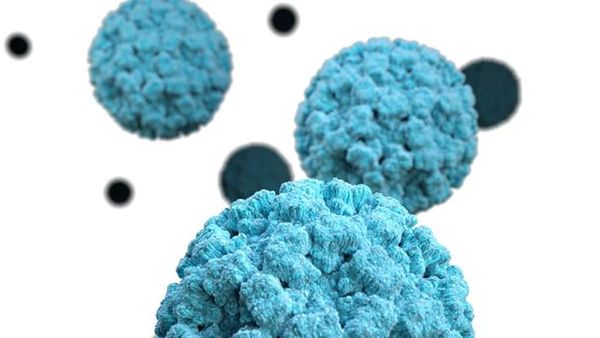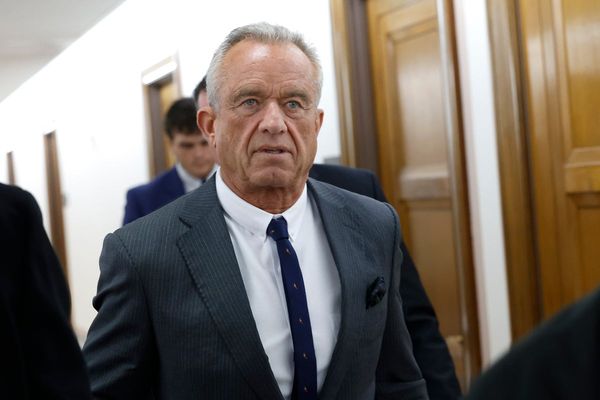
You’re middle-aged with new symptoms after your COVID infection—fatigue, brain fog, joint pain. Is it long COVID? Or are you just getting older?
If you’ve found yourself wondering, you’re not alone.
“It’s a thing,” Dr. Alba Miranda Azola, codirector of Johns Hopkins University School of Medicine’s long COVID clinic, told Fortune.
Given that the world has seen just shy of 650 million officially recorded COVID cases—and that about 10% of the world’s population is age 65 or older—aging and long COVID are bound to intersect in a big way. This is especially true given that the aging process, for many, becomes noticeable starting in early middle age.
As patients get older, “I think it gets a little bit muddy,” Azola said.
Currently, there are no official diagnostic criteria for long COVID. Even the definition of the condition varies depending on whom you talk to, though it’s generally considered to be new symptoms that start during a COVID infection or appear after one, and persist for weeks or months.
Complicating matters, symptoms and timing of aging can vary widely due to genetic and environmental factors. Thus, it’s not possible to definitively say whether your new symptoms are due to aging or long COVID, both, or neither, Azola and other experts say.
“Could it be long COVID? The short answer is yes,” she said. “But it’s difficult to tease out whether it’s long COVID or whether other things are contributing.”
A ‘chicken or the egg?’ dilemma
With more than 200 symptoms identified—from lingering cough and fatigue to ear numbness and a sensation of “brain on fire”—long COVID is undoubtedly not one but multiple conditions, experts say.
True long COVID, many contend, is best defined as a chronic-fatigue-syndrome-like condition that develops after a COVID infection, similar to other postviral syndromes that can occur after an infection with herpes, Lyme disease, and Ebola, among others.
Other post-COVID complications like organ damage should not be defined as long COVID and better fit into the larger umbrella category of PASC, experts say. Also known as post-acute sequelae of COVID-19, the term is used to encompass a wide variety of COVID consequences, from the chronic-fatigue-like symptoms and subsequent heart disease to lasting lung damage to odd new symptoms like urinary incontinence, itching, and skin lesions.
Signs of aging can overlap with long COVID, or at least feel like they do. They often include back and neck pain, osteoarthritis, chronic obstructive pulmonary disease, and dementia, among others, according to the World Health Organization, in addition to fatigue.
Officially diagnosed or not, nearly 60% of the global population is estimated to have been infected with COVID, according to the Institute for Health Metrics and Evaluation at the University of Washington. Now that the majority of global citizens have experienced the virus, determining what new symptoms and conditions the virus caused, or contributed to, is difficult, said Dr. Nir Goldstein, a pulmonologist at National Jewish Health in Denver who runs the hospital’s long COVID clinic.
“It becomes challenging from a clinical perspective to temporally define causation,” he told Fortune.
Timing as a tell
Aging symptoms tend to appear gradually, Dr. Panagis Galiatsatos, an assistant professor in Johns Hopkins’ division of pulmonary and critical care medicine who sees long COVID patients, told Fortune. Not so with long COVID.
“There really is a stark difference between, ‘Before I felt like this’ and ‘After I felt like that,’” he said regarding long COVID symptoms after a COVID infection. “I don’t get too many people confusing their symptoms with aging.”
“A lot of patients will tell you they feel like they’ve aged after COVID,” he added.
Azola has many elderly patients who were less active during the past two years due to pandemic restrictions and now complain that exercise exhausts them. Decreased activity during the pandemic—not the virus—could be to blame, at least for some of their symptoms, she said.
“The older population is experiencing a mix of decreased activity during the years of isolation, and then deconditioning,” she said.
“Most respond well to more physical approaches to progression of activity” or physical therapy, she said.
For now, it doesn’t matter what’s causing your symptoms, experts say, since no treatments specifically for long COVID have been approved. Doctors treat the symptoms, regardless of cause.
Eventually, the cause of the symptoms could matter if the exact mechanisms behind long COVID are determined and treatments are developed, Goldstein said.
“But at this point, practically, it doesn’t,” he said.







